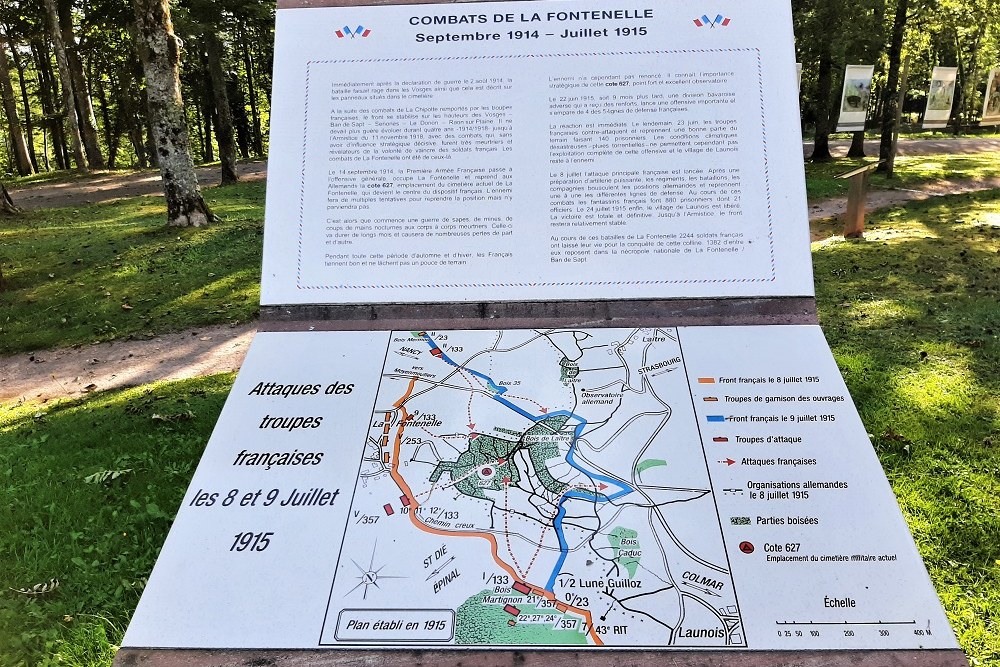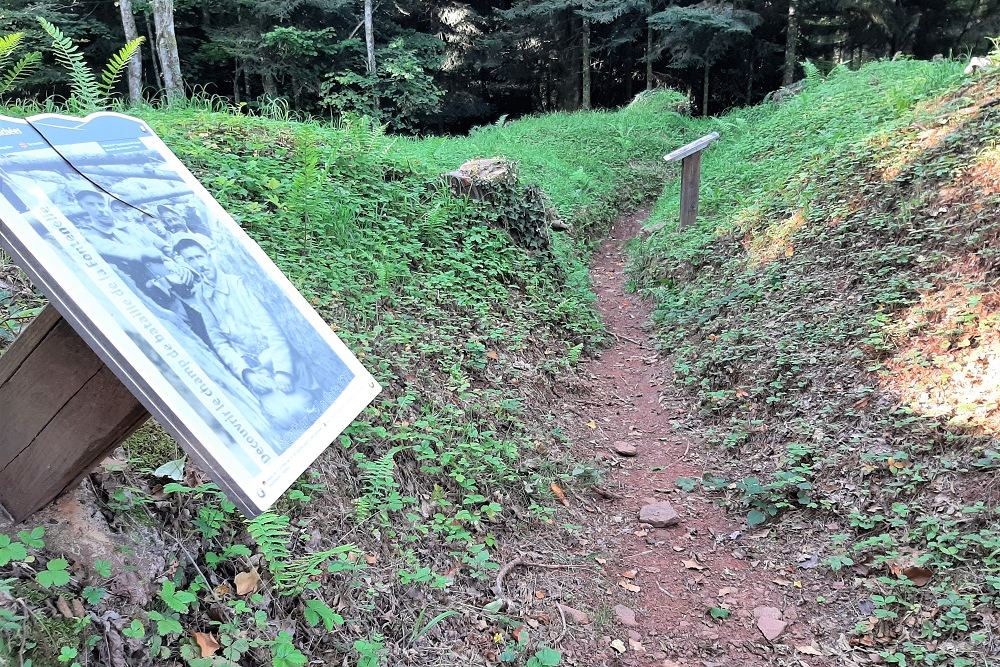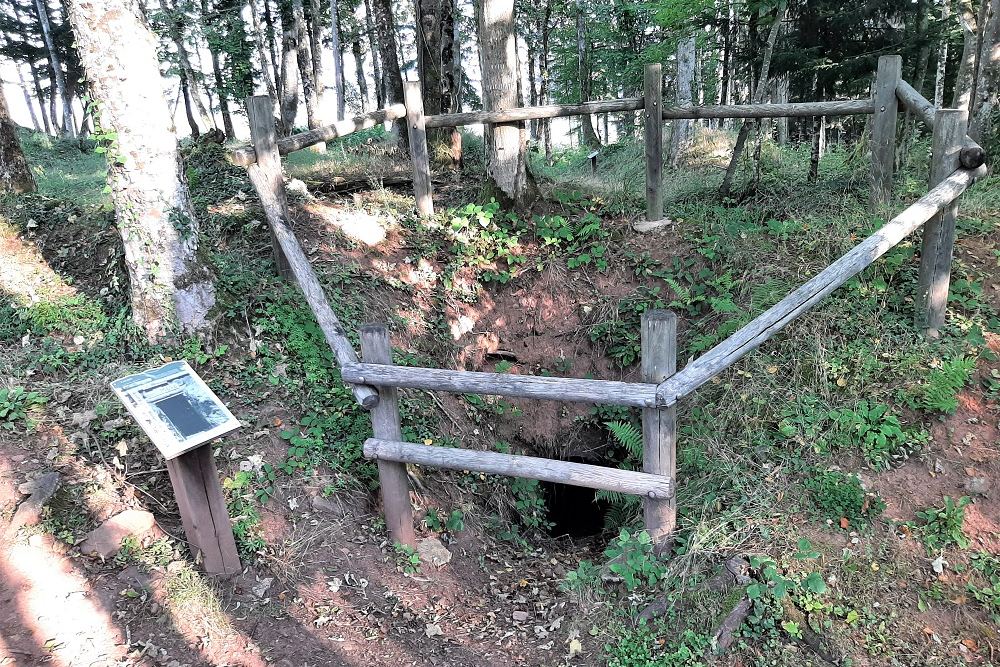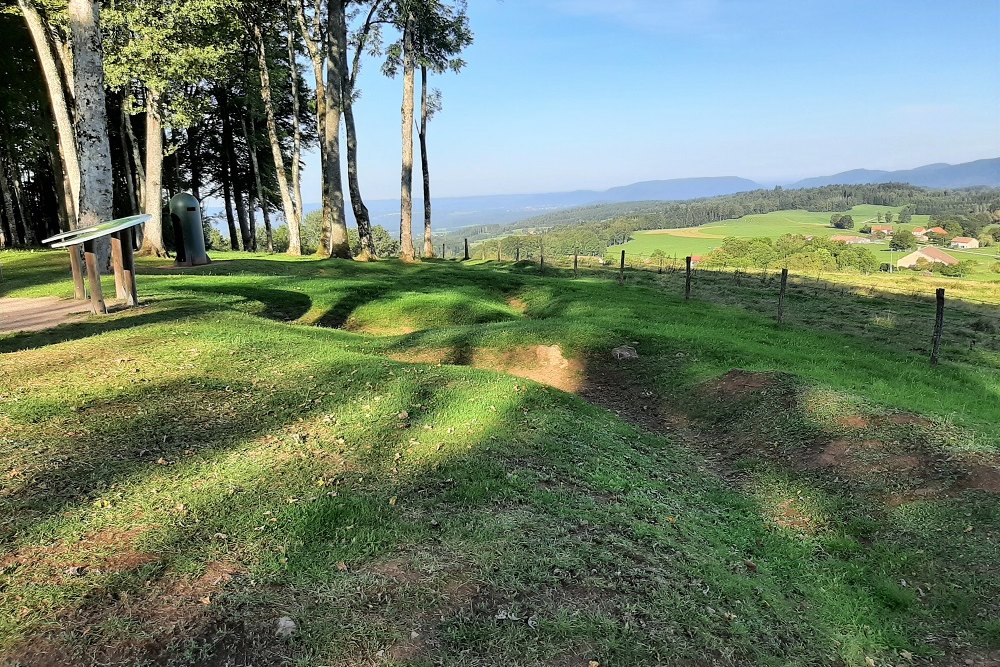Hill 627 - Remains of Defense Lines and Trenches Ban-de-Sapt
The Battles of La Fontenelle 1914-1918
At the beginning of the military operations in the summer of 1914, there was heavy fighting in the Saint-Dié region. On August 24, 1914, the Germans marched to the Charmes Gap, the junction between the 1st and 2nd French armies. This passage, the only plain between the Grand Couronné and the foothills of the Vosges, allowed the enemy to attack the French from the rear, march to the Meuse and take Verdun.
But the enemy, held in check at the Col de la Chipotte, then coveted a height of 627m in the hamlet of La Fontenelle, which made an excellent observatory. After the front was established on the heights of the Vosges, this site became one of the most disputed places between the two armies.
After fierce fighting, the French reached the top of Hill 627, where the necropolis is today. At the end of November 1914, a central bunker was built there, connected by a set of hoses and ditches. The winter of 1914-1915 was costly in terms of men involved in increasingly deadly attacks. Despite an increasing artillery deployment, the latter only managed to capture a few meters of trenches or shelter from the enemy. At the beginning of December, a new type of battle was introduced - the mine war, in which each belligerent dug a tunnel under enemy positions, the ends of which were filled with explosives.
On June 23, 1915, German soldiers launched a massive attack that captured the entire summit. On July 8-9 and 23, two fierce counterattacks, involving increasingly powerful artillery assets, allowed the French troops of the 7th Army to retake the entire hill and take 1,500 prisoners. The mine war then died out on Hill 627, with occasional attacks continuing until 1918.
The sector was in the hands of the Americans from the summer of 1918 and was finally liberated in November.
During these operations, 2,244 soldiers lost their lives. Like Verdun, three hamlets in Ban-de-Sapt were not rebuilt after the war.
Today the necropolis is located on the former battlefield. In addition to the military cemetery, the landscape contains many remains of positions, trenches, ammunition and military works from the First World War.
Do you have more information about this location? Inform us!
Source
- Text: TracesOfWar - Chemins de mémoire
- Photos: Koos Winkelman









